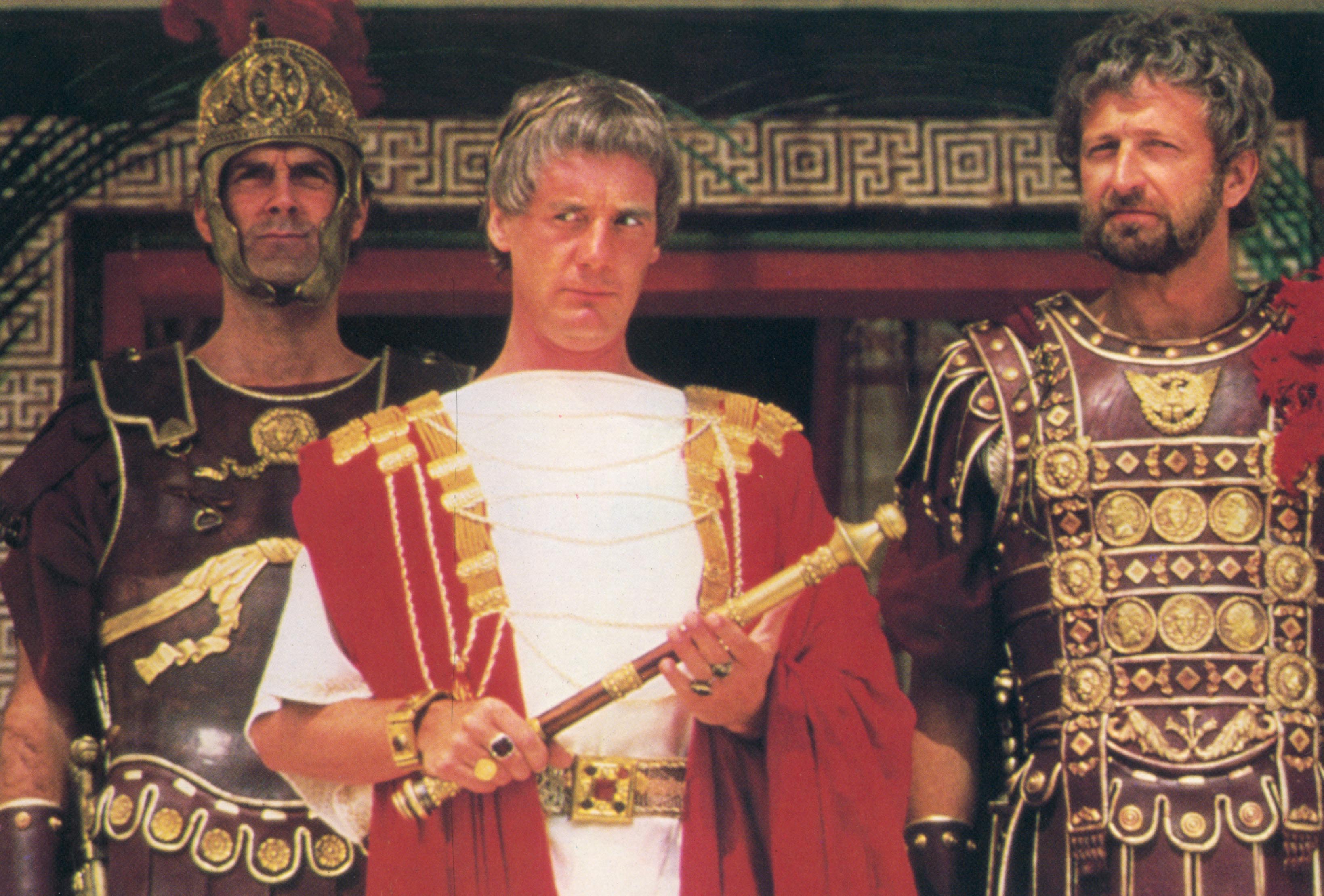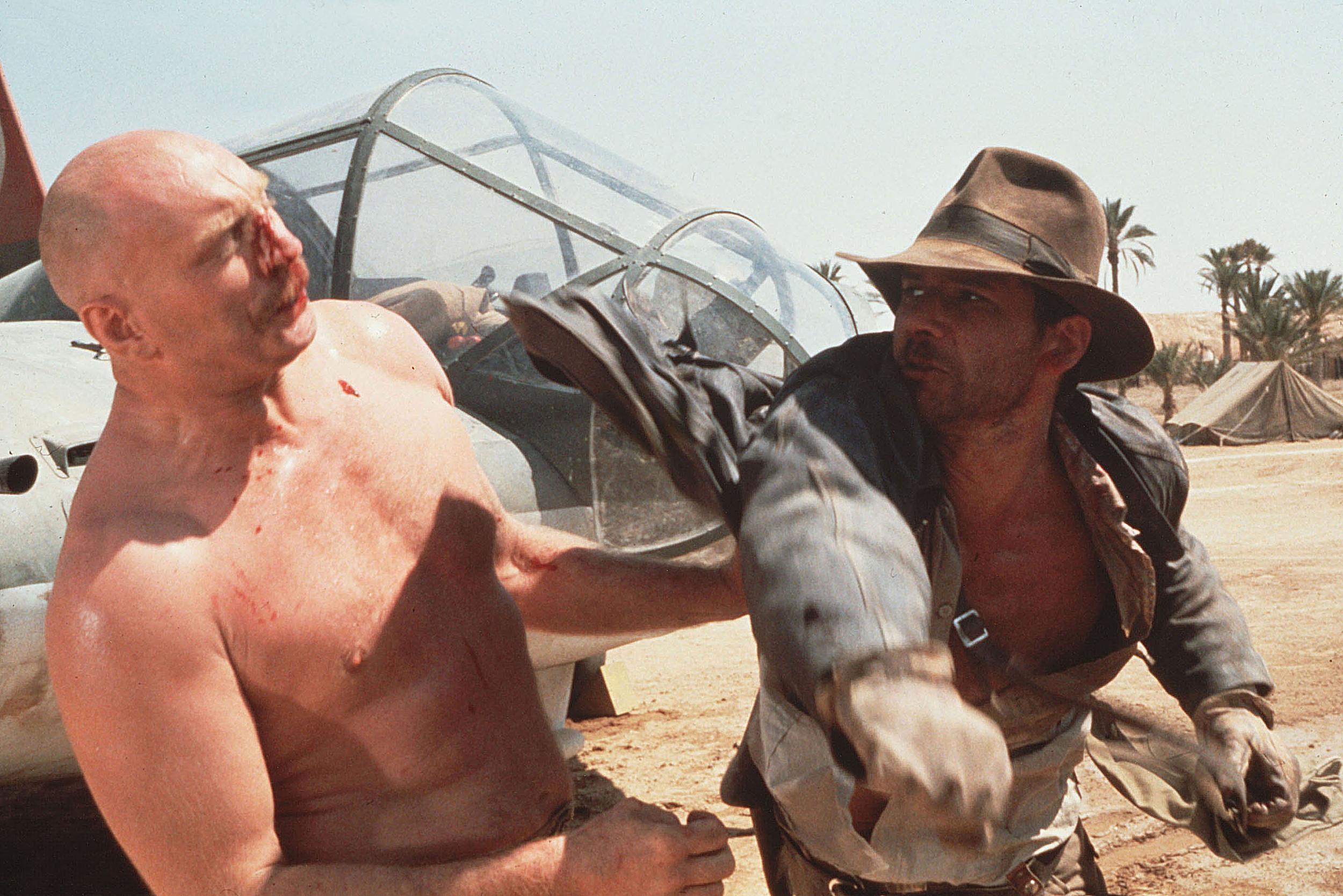Looking on the bright side of life: Tunisia tries to encourage more movie fan tourists
The north African country was the backdrop for famous films such as ‘Life of Brian’, ‘Raiders of the Lost Ark’ and ‘The English Patient’. Now Tunisia wants to encourage tourists to see the locations for themselves, reports Simon Speakman Cordall from Tunis

It’s not clear if the Tunisian government knew what they were getting into when they opened up some of their prime locations to the Monty Python film crew.
Franco Zeffirelli had recently completed shooting the prestigious Jesus of Nazareth at the coastal town of Monastir. There was little reason to suppose that the Python film, Life of Brian, using many of the same crew and locations, would be radically different. That the principal Tunisian producer, Tarek Ben Ammar, was the nephew of the country’s president, also likely didn’t hurt.
However, any assumption that the film’s release would go unnoticed proved somewhat misjudged. In cities across the US and UK, angry crowds protested against a film that many hadn’t even watched, declaring it an insult to their religion and their messiah, naughty boy or not.
Ireland and Norway both banned the film, while the Bishop of Southwark, during a television debate with two of the principal writers and actors, Michael Palin and John Cleese, assured them they would receive their “30 pieces of silver”, in an unambiguous reference to Judas’ betrayal of Jesus to the Romans.
Looking back, it can be hard to gauge just how controversial the Pythons’ satire of organised religion was. In the late Seventies, it was massive.
All of which make the shooting locations curious targets for tourism in a development partnership between the Tunisian government and the German development agency, Gesellschaft für Internationale Zusammenarbeit (GIZ).
Life of Brian sets at Monastir and around Tunisia are among the four films targeted for development, with Star Wars, Raiders of the Lost Ark and The English Patient making up the quartet. The plan behind it all is to increase the number of tourists already in Tunisia visiting the locations, while preparing local hospitality and businesses for fresh visitors.
“Through the means of storytelling about the film venues, incentives are to be created to expand one’s own radius and to explore places in the vicinity,” a spokesperson for GIZ said.
“This applies to Monastir and all other filming locations. The aim is to showcase the diversity of Tunisia and its excursion opportunities, as well as to demonstrate that stories about cultural goods can be used to successfully promote tourism.”
That Tunisia needs the revenue is beyond dispute. Currently trapped in a political deadlock between the president and the country’s general labour union, the UGTT, the hard currency that tourism brings would provide welcome support to the debt-racked country.
Across Tunisia, inflation and the cost of living are rising, while unrest simmers. In 2019, before the pandemic closed hotels, around nine-and-a-half million tourists made their way to Tunisia, contributing a vital 16 per cent of hard currency to the country’s faltering GDP. Now a further bailout by the International Monetary Fund (IMF) is needed if Tunisia is to avoid bankruptcy.
The diversity of Tunisia’s landscape is in ample display in Life of Brian, from the mountainous desert terrain around the interior town of Matmata, where Brian and his fellows were left to hang about, pondering upon the bright side of life, to the walled coastal city of Sousse, which doubled as Jerusalem’s outskirts.
Elsewhere, with the aid of some ingenious design, the historic Roman theatre in the capital, Tunis, doubled as the gory gladiatorial salesground for larks’ tongues and ocelot spleens, while Reg and the People’s Front of Judea angrily fumed at the splitters of the Judean People’s Front.
However, it is Monastir, around half an hour north of Sousse, that many will recognise from the film. It is here that the bulk of it was shot, with the walled centre being carefully dressed to resemble something at least close to Jerusalem under Roman occupation.
In truth, standing in the broad square of the ribat at Monastir today, it’s hard to imagine that a great deal has changed since the time the fortress was founded in the first century. Around the ribat now stretches a relatively modern Tunisian town, with sprawling resorts at one end and a relatively opulent marina nestled within the shadow of the ribat itself.
Unlike the Star Wars crew, who had to deal with the relatively undeveloped extremes of southern Tunisia a few years earlier, the Pythons arrived to a location well versed in dealing with film crews, a partially prepared set and teams of extras experienced and ready to work on the film.
“They were all very knowing because they’d all worked for Franco Zeffirelli on Jesus of Nazareth, so I had these elderly Tunisians telling me, ‘Well, Mr Zeffirelli wouldn’t have done it like that, you know,’” director, Python and alleged virgin Mandy, Terry Jones, later remembered.
“It was extraordinarily efficient,” Cleese recalled. “I will always remember on the first day, I played the priest in the stoning sequence,” where a crowd of male actors playing angry women playing angry men, stone a frail old man and then a priest for blasphemy. “We got out there at eight o’clock and by lunchtime we had the scene shot and I was in the hotel swimming pool.
“Usually, it takes about three days till you get to know everyone on set; it’s like moving to a new football team – you don’t know how people play, but Brian was different.”
Among those rock-flinging zealots was hardcore Python fan, Kim Howard Johnson, whose remarkable journey to Tunisia had started a few weeks earlier when he took Palin up on a casual invitation made in the US to swing by if he was ever in London.
As one of the very first American fans, Johnson’s arrival in London was met with hospitality, script readings, meals and even an overnight stay with Jones and his family at their holiday cottage in Wales. The invitation to join them in Tunisia was inevitable.
“It was like arriving in Judea 33AD,” he said of his first experience on entering the set at Monastir. “It was like, half Muslim castle, half Hollywood,” he said. “It was wonderful. It was like a holiday,” he told The Independent.
Certainly, the experience of filming on an ample budget, thanks principally to Beatle George Harrison, contrasted sharply with their relatively miserable experience making the film’s predecessor, Monty Python and the Holy Grail, in Scotland.

“Graham Chapman – who had recently quit drinking – worked his ass off on that movie,” Johnson recalled.
“He was playing the lead, so was in almost every scene. He also worked as the on-set doctor, so as soon as he finished, he’d be off to the surgery where there was a long line of people waiting for him. Terry Jones was always on set, often shouting out instructions while dressed as the alleged virgin Mandy. However, for the rest of us, it was great. We had time to relax, lie by the pool, enjoy Tunisia.”
Since completing his six weeks with the Pythons, Johnson has gone on to build a career in comedy, currently teaching writing at the Comedy Lab and helping Cleese script the stage play for the Life of Brian. Unlike the previous stage version of Monty Python and the Holy Grail, Spamalot, the Life of Brian will not be a musical. Johnson does, however, promise that at least one song will be included.
No matter what anyone says. There’s always a bright side






Join our commenting forum
Join thought-provoking conversations, follow other Independent readers and see their replies
Comments